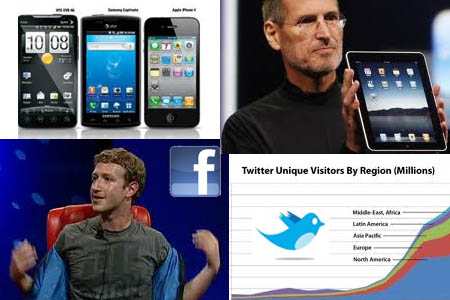[Editors note: Nearly all of my articles on Salary Tutor are genuinely written to truly help people with kindness and empathy. This one? Not exactly. Well, it IS truly meant to help people, but in this case, the tone is of a tongue-in-cheek “Jim Rant” of someone that was frustrated with the number of bad resumes he was seeing (think Larry David describing the job search). Thanks to a reader that pointed out that this comes off as obnoxious … I agree with him. But it’s all in good fun and the core advice is still important. Enjoy.]
You’ve had it up to here. Your boss is a jerk. You work way too many hours. You just got passed up for a promotion. You know you should be making more money. It’s time to find a new job. Maybe you got laid off.
Or maybe you’re a 19-year-old college sophomore looking for a summer internship. One day you’re surfing the job listings and there it is… the proverbial dream job. You want this job so badly you can taste it. They want a cover letter and resume. You can’t screw this up. What do you need to do?
Flash back to the mid 1990s, where I’m the third employee at a tech startup. Unfortunately, this was back when you still had the long hours and low pay of a new company, but before they handed out magical stock options that made you a millionaire in 14 months.
We were growing like crazy, and during that time I was the de facto HR department. I sorted through hundreds of resumes and conducted dozens of interviews. Back then, it was just you and your paper resume.
Flash forward to today, where, as a marketing director at Wired.com in New York, I’ve conducted 5 searches for an intern with both marketing and tech skills over the last few years. My how the rules have changed.
Now of course, you send your digital resume via email, attach your cover letter as a nicely formatted PDF, and there are a host of sites, from online portfolios and blogs, to social networking sites and Google searches, that can both help – or kill – your chances of getting that dream job.
How are things different in the digital age? Here’s what I recommend:
Lets start with your opening email, which serves as a cover letter. Remember, like a good company, you’re trying to brand yourself and paint a picture that the interviewer can relate to:
- Are you an entrepreneurial self-starter?
- A whiz kid with stats and technology?
- A creative wordsmith and copywriter?
Here’s what to do:
Adapt your tone and style to that of the job posting. The first email I received did an excellent job of doing just that, responding to the fun, conversational tone of the job posting, with a similar style cover letter. So I responded and let her know.
To use a pop culture reference, I felt like an American Idol judge telling her… “You took a risk by going outside the traditional formal business approach, but you made it your own and you nailed it.â€
Here is what NOT to do:
1) For the love of Pete, get a normal email address. I don’t care if your name is Yazmin Suchetti, but like, everyone you know, like totally calls you Yaz. The “from†name on your email address should not be simply Yaz. Do you know who Yaz is? I’ll give you two choices.
Yaz is Carl Yastrzemski, one of the greatest players in baseball history, the Boston Red Sox’ all-time leader in career RBIs, runs, hits, singles, doubles, total bases, and games played, and the last man to hit for the triple crown.
or
Yaz is an 80’s synthpop duo from Britain who made the platinum selling album Upstairs at Eric’s.
You? If you’re going for a professional job, you’re Yazmin_Suchetti@gmail or yahoo or hotmail. That’s it. No excuses. It’s FREE!
2) Match the job description. If I am clearly looking for someone that knows technology and marketing, do not list artwork, poetry, and the choir in the first sentence of your pitch to me.
One person listed data entry, broadband/router setup, and computer maintenance as the first three bullet points of a job. Great. But the next two bullet points were building repairs and custodial duties. Should have quit while you were ahead.
3) Do not make me work and don’t be lazy. One candidate wrote: “Attached is my resume. If you require a cover letter, please let me know and I will attach it in another email.â€
You know what? Don’t worry about it. I’m sure you’re too busy to spend 15 minutes writing an introductory paragraph or two that would separate you from everyone else. Meanwhile, I’ve got plenty of time on my hands to get in a back and forth conversation with you. That’s why I’m looking for an assistant.
4) Spell-check and proofread everything. Twice. If it’s not bad enough that I’m the type of guy that likes to search for typos on restaurant menus, if the job position asks for strong copywriting skills, know that your writing and grammar will be scrutinized more than most.
I am extremely impressed with your resume by the fact that you were Salesperson of the Week twice, Salesperson of the Month once, and have personally raised over $60,000 fundraising. But when you describe yourself as the “Lead money getter†in your cover letter, that doesn’t cut it.
Now let’s go to your resume. Listen, this is the digital age. And this is a marketing internship for Wired.com. So say you’re a college student. Listen, I understand that you might have switched from political science to computer science three weeks ago, and you’re really not sure what you want to do with your life.
But try to focus on the moment. Why not take THREE MINUTES and change the objective on your resume to say “My objective is to get this internship at Wiredâ€!
I was shocked that not a single applicant took the time to do this.
I know I sound like a grandpa when I say that before high quality laser printers and ubiquitous email, you finalized your resume and then went to Staples and bought a box of ecru-colored, 20-pound weight, nicely textured paper. Then you printed out 50 copies to bring on all your interviews. You had one, maybe 2 versions.
But now, it literally takes seconds to tweak a resume to match a specific job, export it to a PDF, and email it to the hiring manager.
And as long as we’re saving the file… there is only one way to name your resume:
Firstname_Lastname_resume.pdf
Why that way?
1) By saving it as a PDF – which by now is an industry standard that any hiring manager has installed – you ensure that any fonts and formatting will not be thrown out of whack when converting across various versions of Microsoft Word, or from Mac to PC.
2) You need to assume that the hiring manager might be saving all the potential candidates in a single directory with other files, and if you just call it resume.pdf, they won’t be able to distinguish yours from the others.
3) Calling it something that makes sense to YOU, but not to the hiring manager, such as jpfw-version1b_revised-09032010.pdf just looks sloppy and unprofessional.
OK, on to the lightning round of resume ranting:
-Â Put your name and contact information on your resume. Believe it or not, not one but two people did not have their name on their resume
-Â Do NOT send your resume as a jpg. Yes, I got a jpg resume.
– Do not put your references on your resume. When I’m ready for them, I’ll ask.
- Do not have a 2-3 page resume for an internship or your first job out of school. You’re 19 years old! Fit it on one page! And I said one page! If it’s 1 ¼ pages long, edit!
- Please… show a little effort. This is the digital age of graphic design, Photoshop, and multimedia. You are going for a tech position. Go crazy and, oh I don’t know… Change the font! Add a line break! Add a hint of color. Put something interesting in the “other activities†section to make yourself memorable. Of course it’s the CONTENT of the resume that I pay attention to, but if you start me out staring at 12pt Times New Roman, chronological order in the MS Word “resume†template, what does that say about your creativity and initiative?
Of course, all this is assuming you actually INCLUDE your resume.
I received an email that said “Please find my attached resume.†There was not one attached.
Now, I easily could have written them off instantly as someone without attention to detail. But I let this one slide. I simply hit reply and said… “I didn’t receive the attachment.â€
The next email that came in said “Hi Jim… apologies. Resume attached.â€
Guess what? NO RESUME.
Finally, the email after THAT said “Resume attached,†and it was on there.
Now I’m sorry if I interrupted your 10-hour non-stop Grand Theft Auto videogame marathon, but three strikes and you’re out.
And finally, I’ll leave you with these two doozies.
1) A candidate listed his work at the campus computer lab. Fantastic… I love tech geeks. But I’m guessing Microsoft Word incorrectly auto-corrected the word “Maintained†because what the bullet point said was “Marinating computer lab to ensure it was clean and orderly.†Marinating.
I can see the scenario: “Sir can you help me? My computer seems to be locked up.â€
“Aha… I see the problem… you’ve got some Teriyaki sauce in the keyboard.â€
2) Although the job said nothing about languages, there were a lot of resumes that boasted “Fluent in Italian,†“Conversational French,†“Read and write Spanish,†and so on. But I guess not everyone has actually finished their finals, because one resume said:
“Almost fluent Spanishâ€
See to me, “almost†means “NOT.â€
Hey John, did you win the lottery? Well, I almost won the lottery.
Did the Yankees win last night? Well, they almost won last night.
I pictured the real-life scenario playing out, as my intern and I meet for lunch with an international ad agency, and the CEO says something in Spanish and I turn to him and ask what he said, and he pauses, thinks, and replies:
“Well, he either said that he’s very impressed with the great hunger with which we pursued this account and our thirst for knowledge, or he highly recommends the Nachos Grande Carne Asada and a pint of Dos Equis.â€
And If you’re wondering if that last guy got the job, well, he almost got the job.


